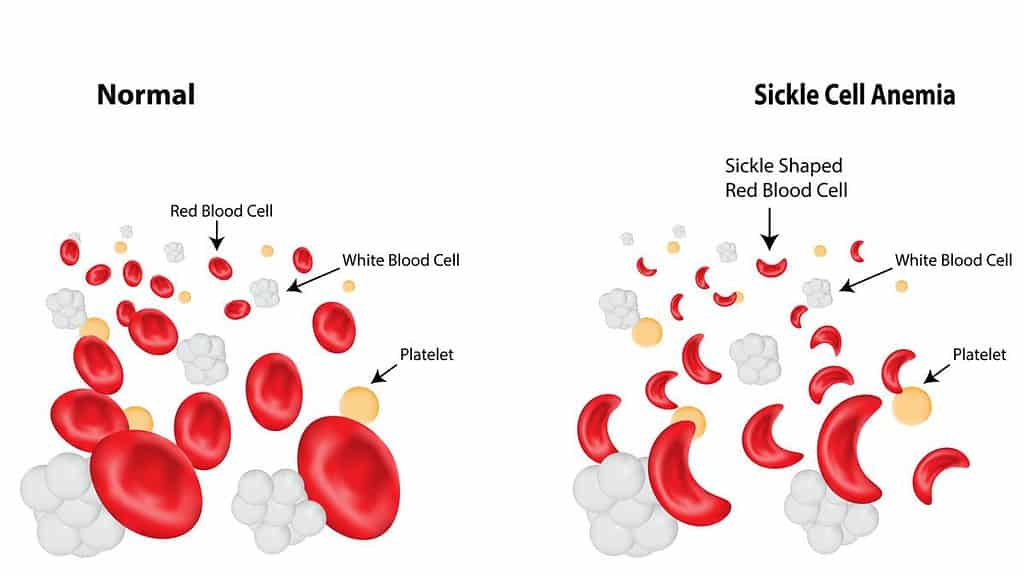Anemia is a medical condition that occurs when the number of red blood cells or hemoglobin levels in the blood is below normal. Hemoglobin is a protein on red blood cells that carries oxygen from the lungs to the rest of the body. A lack of red blood cells or hemoglobin can cause the body to have a shortage of oxygen, which can result in fatigue, weakness, and other symptoms.
Table of Contents
Anemia can be caused by a variety of factors, including iron deficiency, vitamin deficiency, chronic diseases, genetic disorders, and blood loss. Treatment for anemia depends on the underlying cause and may involve dietary changes, supplements, medications, or blood transfusions.
Type of Anemia
There are several types of anemia, including:
- Iron deficiency anemia: This is the most common type of anemia, and it occurs when the body doesn’t have enough iron to produce adequate amounts of hemoglobin.
- Vitamin deficiency anemia: This type of anemia can result from a lack of essential vitamins like vitamin B12 and folate, which are needed for red blood cell production.
- Hemolytic anemia: This type of anemia occurs when red blood cells are destroyed faster than they can be produced. It can be caused by genetic disorders, autoimmune disorders, infections, or medications.
- Aplastic anemia: Aplastic anemia is a rare condition in which the body stops producing enough new blood cells. It can be caused by a variety of factors, including exposure to toxins, radiation, or certain medications.
- Sickle cell anemia: Sickle cell anemia is a genetic disorder that affects the production of hemoglobin and causes red blood cells to take on a crescent or “sickle” shape.
- Thalassemia: Thalassemia is a genetic disorder that affects the production of hemoglobin and results in the production of abnormal red blood cells.

Treatment for anemia depends on the underlying cause and may include iron or vitamin supplements, medication, blood transfusions, or bone marrow transplants.
Anemia symptoms
The symptoms of anemia can vary depending on the severity of the condition and the underlying cause, but some common symptoms include:
- Fatigue and weakness
- Shortness of breath
- Dizziness or lightheadedness
- Pale skin or yellowish tint to the skin
- Rapid or irregular heartbeat
- Cold hands and feet
- Headache
- Chest pain
- Cognitive difficulties, such as difficulty concentrating or confusion
- Reduced appetite and weight loss
Special signs of anemia symptoms can be yellowing skin, the whites of the eyes pale to yellowing, enlarged spleen, and urine is dark red. Symptoms for children who are iron deficient can result in developmental delays and behavioral disorders, such as problems with social interaction, decreased motor activity, and attention to decreased tasks. Developmental problems can persist if iron deficiency is not addressed.
It is important to note that some people with anemia may not experience any symptoms, especially in the early stages of the condition. If you suspect that you may have anemia, it is important to speak with your healthcare provider for an accurate diagnosis and appropriate treatment.
TREATMENT
If you have shown symptoms, you should go to the doctor immediately. Healing can be done based on the cause of anemia. Anemia occurs due to iron deficiency, the doctor will prescribe the drug in the form of droplets or tablets, and may also recommend foods rich in iron.
This disease also occurs due to irregular or heavy menstrual cycles, the doctor will give bleeding regulatory drugs, folic acid and vitamin B12 supplements. As for chronic /severe anemia can be done red blood cell transfusion, removal of spleen or treatment with drugs, stimulating the bone marrow to make more blood cells.
Spinal cord transplantation will be considered for people with sickle cell anemia, thalassemia and aplastic anemia. Which means taking the donor’s spinal cord and injecting it into the vein. Cells from the donor will flow through the bloodstream to the spinal cord, where the cells will begin to produce large red blood cells.
However, it should be noted, iron intake should not be excessive. You see, this element can actually interfere with health and damage the body’s organs. With the adequacy of iron in the body, it can increase the body’s resistance to infection and also maintain health.


